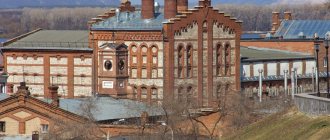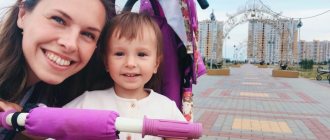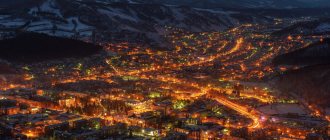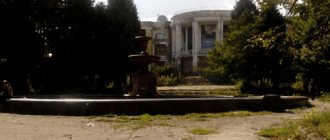It’s worth coming to the Penza region to see with your own eyes the land that has given the world so many extraordinary personalities. Penza is proud of writers V.G. Belinsky, M.Yu. Lermontov, D.V. Davydov, composer A.A. Arkhangelsky, directed by V. Meyerhold. The famous silent film actor I. I. Mozzhukhin was born and raised in the city. Penza land is the birthplace of the great historian V. O. Klyuchevsky, author of the “Course of Russian History”.
Penza, at first glance, a quiet provincial town, even bore the sonorous name “New Athens”, second only to capital cities in terms of its level of education.
Many phenomena of cultural life took place for the first time in Penza. The city is the birthplace of the Russian circus. In 1873, a performance took place presented by Russian entrepreneurs - the Nikitin brothers.
The geographical location of the region is also extraordinary. It is located in the center of the European part of Russia, at the junction of three natural zones: forest, steppe and forest-steppe.
State Lermontov Museum-Reserve "Tarkhany"
State Lermontov Museum-Reserve "Tarkhany"
Belinsky district
The Tarkhany Museum-Reserve is located in the family estate of the Arsenyevs, Mikhail Lermontov’s maternal ancestors. The mansion was built by the poet’s grandfather Mikhail Arsenyev in 1794. The estate got its name from the activities of local peasants: they “tarkhanil”, that is, traded.
Lermontov lived in Tarkhany until he was 13 years old. Later, the poet came here to visit his grandmother Elizaveta Arsenyeva. On the estate he wrote the poems “Tambov Treasurer” and “Circassians” and the drama “Two Brothers”.
Lermontov was also buried here - in the family chapel-tomb not far from the mansion. In the same crypt are the graves of his relatives - his grandfather, grandmother and mother.
The museum ensemble includes a manor house, a tomb, two churches, which were built at the expense of Elizaveta Arsenyeva, a gatehouse, a servants' hut, a manor park with ponds and three orchards. The museum has permanent exhibitions “Lermontov in Tarkhany” and “Life of Tarkhany Peasants”. One of them contains a collection of personal belongings of the Arsenyev family, Lermontov’s lifetime publications, his manuscripts and drawings.
In the 2010s, restoration ended in Tarkhany. The museum recreated the life of the Russian nobility in the first half of the 19th century. Nowadays, the estate hosts theatrical performances, master classes on ancient Tarkhan crafts, and costume balls.
Light and music fountain "Sputnik"
Now in Penza, in its very center, a beautiful musical fountain has appeared that attracts the attention of residents and guests of the city. The fountain is especially popular in late spring and summer, it is then that it begins to work at full power and you can watch the light and sound show performed by it.
The streams of water are not fenced in anything and children sometimes climb inside to play with them. In addition to the fountain itself, there is a park area with pedestrian and bicycle paths around it, a well-cut lawn and a beautiful embankment.
State Museum of A.N. Radishcheva
State Museum of A.N. Radishcheva
Kuznetsky district
The museum is located in the restored family estate of the noble Ablyazov family, relatives of the writer and philosopher Alexander Radishchev. The stone manor house was built by the writer’s great-grandfather Grigory Ablyazov. Here Radishchev was born, spent his childhood, and later worked on the economic treatise “Description of My Possession.”
In 1736, the Transfiguration Church was built on the territory of the estate, which has survived to this day. However, the iconostasis was destroyed during the Soviet years. In the late 1990s, another one was moved here from a closed church in a neighboring village. Inside the Transfiguration Church there is a family crypt of the Radishchevs. The writer's parents, brother and youngest son are buried there.
In the 19th century, the mansion fell into disrepair and was demolished. The building was restored on the old foundation in 1995, but its exact appearance could not be repeated. Restorers used drawings and plans of other ancient estates in the Penza region. Inside, the interiors of 19th-century manor houses were reconstructed.
Today, the museum ensemble also includes the former zemstvo school in the village of Verkhnee Ablyazovo. It houses the main exhibition. Personal belongings of Radishchev and members of his family, rare lifetime publications and handwritten copies of “Journey from St. Petersburg to Moscow” are exhibited here.
Art-Penza
Art-Penza is one of the tourist centers of the Penza region. On the territory of the complex you can not only have a good rest for your body, but also absorb the exquisite beauty of all the works and compositions that are presented here. On the street around the hotel complex there are statues of various sculptors.
Some of the most popular works are “Tired Woman” (tired as a horse), Phoenix Bird, a portrait of Tarkovsky made in a modern style. more than 1,000 works of art on the territory of the hotel and in its warehouses , some of which you can even buy for your home.
Address: Ramsay, Ozdorovitelnaya street - 9.
Museum-Estate of V.G. Belinsky
Museum-Estate of V.G. Belinsky
Belinsky district
The only Vissarion Belinsky Museum in Russia is located in the city of Belinsky (formerly Chembar). The exhibition is located in a wooden house of the early 19th century, where Belinsky lived from 1816 to 1825. The last time the critic visited here was in 1830. Then he came to Chembar on vacation after finishing his first year at Moscow University. In 1837, the Belinskys sold the house and left Chembar. In the middle of the 19th century, the Antushins merchants set up a tavern in it, which operated until the revolution.
In the 1920s, government offices were located here. The museum in Belinsky’s house was opened in 1938 on the initiative of Chembar local historian Alexander Khramov. Today, household items from the 19th century, books from the family library, and personal belongings of Belinsky’s relatives are displayed here.
The museum complex includes the building of the Chembar district school, where Belinsky studied from 1822 to 1825. The building recreates the interiors of classrooms and presents manuals and textbooks that the future critic used to study. Not far from the school there is a monument “Belinsky the Gymnasium Student”, which was created by sculptor Gennady Malov.
Another permanent exhibition is open in the house of the merchant Fyodor Antyushin, a neighbor of the Belinskys. Manuscripts and letters of the critic, lifetime editions of his articles are exhibited here.
Monument "First Settler"
In 1980, a monument was erected in Penza in memory of the first residents of this glorious city. The place and time of construction of the monument were chosen for a reason. About 600 years ago, from the date of construction of the monument, the Battle of Kulikovo took place. The city of Penza was built from the attack of steppe nomads who robbed border settlements, so the sculpture is directly related to this event. The monument itself depicts a peasant warrior who is ready not only to work in the field, but also to defend his homeland.
The installation location was also not chosen by chance; it not only offers an excellent view of the city, but also nearby there are the ruins of the city’s historical fortress.
Address: Kirova street.
Museum of A.I. Kuprina
Museum of A.I. Kuprina
Narovchatsky district
The Alexander Kuprin Museum is located in the former district town of Narovchat. The wooden one-story house was bought by the writer’s parents, Ivan Kuprin and Lyubov Kulunchakova, in the middle of the 19th century. Alexander Kuprin was born here in 1870.
Some time after the death of her husband, in 1874, Lyubov Kulunchakova sold the house and left with her children for Moscow. The building changed owners several times until it was transferred to the Shlykov merchants. In 1891, the mansion burned down, but the Shlykovs restored it that same year.
After the revolution, the family of the Soviet literary scholar and collector of ancient manuscripts Vladimir Malyshev lived in the Shlykovs’ house. In 1981, the Alexander Kuprin Museum was opened here. Today, the collection contains Kuprin's personal belongings, including photographs, letters, a coffee maker and an ashtray. They were donated to the museum by the writer’s daughter.
Nikolsky Museum of Glass and Crystal
Nikolsky Museum of Glass and Crystal
Nikolsky district
In 1789, at the crystal factory of Alexei Bakhmetev in the city of Nikolskoye, a special storeroom was opened, which was also called the model room. The best products were stored there and then displayed at exhibitions.
In 1884, the plant was inherited by Prince Alexander Obolensky, a distant relative of the Bakhmetevs. The new owner replenished the museum collection with samples of foreign glass. Obolensky also brought to the storeroom decanters found at archaeological excavations in Kerch, which were made in the 1st century AD.
After the revolution, the plant was nationalized and renamed “Red Giant”, and the museum continued its work. His collection included products from Soviet glassmakers. In 1990, a new two-story building was built especially for the museum, which now houses the main exhibition.
Today the museum exhibits one of the largest collections of glass products in Russia, which includes over 14 thousand exhibits. Among them are cups that the factory produced in the 1750s by order of Catherine II, medallions depicting heroes of the Patriotic War of 1812, and a crystal table of Joseph Stalin.
Sculpture Park "Legend"
Not far from the village of Ramzai, there is a park that is hard to find analogues not only in Russia, but also in Europe. On a fairly large territory there are more than 400 exhibitions of various sculptors from the world. Every year more and more artists come here, they are paid for accommodation, food, and if they are lucky, one of the masterpieces will be able to stay at this exhibition and glorify its creator.
The competition for participation is quite tough, so the best remain here, which is a definite plus for tourists. For comparison, Norway has a similar park, but it is half the size of Legend. Having arrived here, a tourist may not even have time to see all the masterpieces in one visit, so it is recommended to visit this place more than once.
Tikhvin Kerensky Monastery in the village of Vadinsk
Tikhvin Kerensky Monastery in the village of Vadinsk...
Penza region
The Tikhvin Kerensky Monastery was founded in 1683 near the city of Kerensk (now the village of Vadinsk). According to legend, at this place the miraculous icon of the Tikhvin Mother of God appeared to the Penza venerable elder Praskovya.
There was a wooden church of the Tikhvin Icon of the Mother of God in the monastery, and in 1762 they began to build a stone one. However, after two years, construction of the temple stopped due to lack of funds. In 1764, the monastery was closed, but the nuns remained to live in it until 1848, when the monastery was reopened.
At the same time, construction of the Church of the Tikhvin Icon of the Mother of God resumed. The building took almost 40 years to construct and was consecrated in 1885. On the territory of the monastery they also built a bell tower with a gate church, and two new churches - the icon of the Mother of God “Life-Giving Spring” and St. Nicholas the Wonderworker.
After the revolution, the monastery was closed again. During Soviet times, its churches lost their domes, most of the fence, and several outbuildings were lost.
In 1997, the monastery was transferred to the Penza diocese. A men's monastery was opened here, and churches damaged during Soviet times were restored. In 1999, the only museum of Orthodoxy in the Penza region was created at the monastery, where church utensils, ancient liturgical vestments and icons are exhibited.
Assumption Cathedral
One of the most beautiful old-type cathedrals is located in Penza. It was built in 1905 to replace an old wooden church that completely burned down. With the money of merchants and local residents, a Russian-style temple called the Assumption was built.
This is a truly huge structure that can be seen from many areas of the city. In 2005, the Assumption Cathedral celebrated its anniversary, and today it continues to perform its functions, and sometimes it hosts excursions for tourists.











